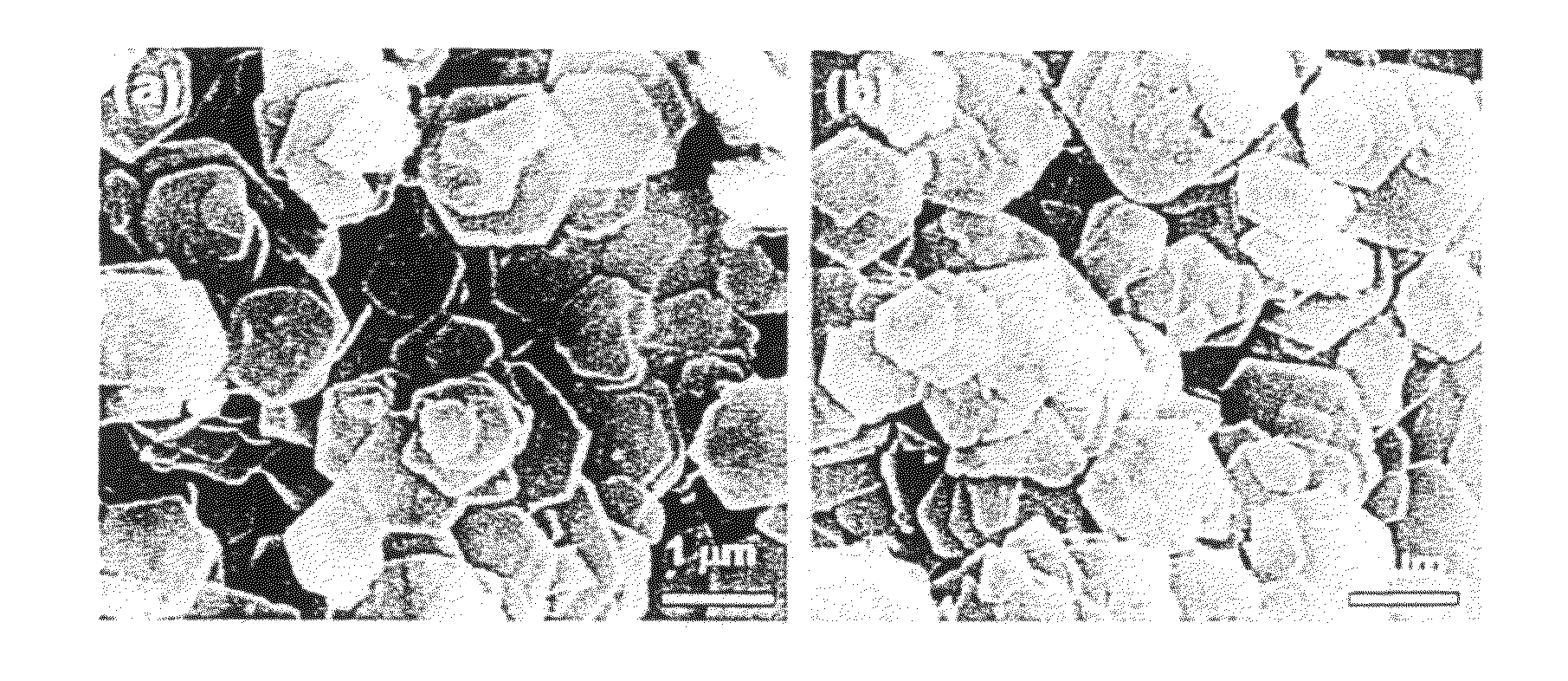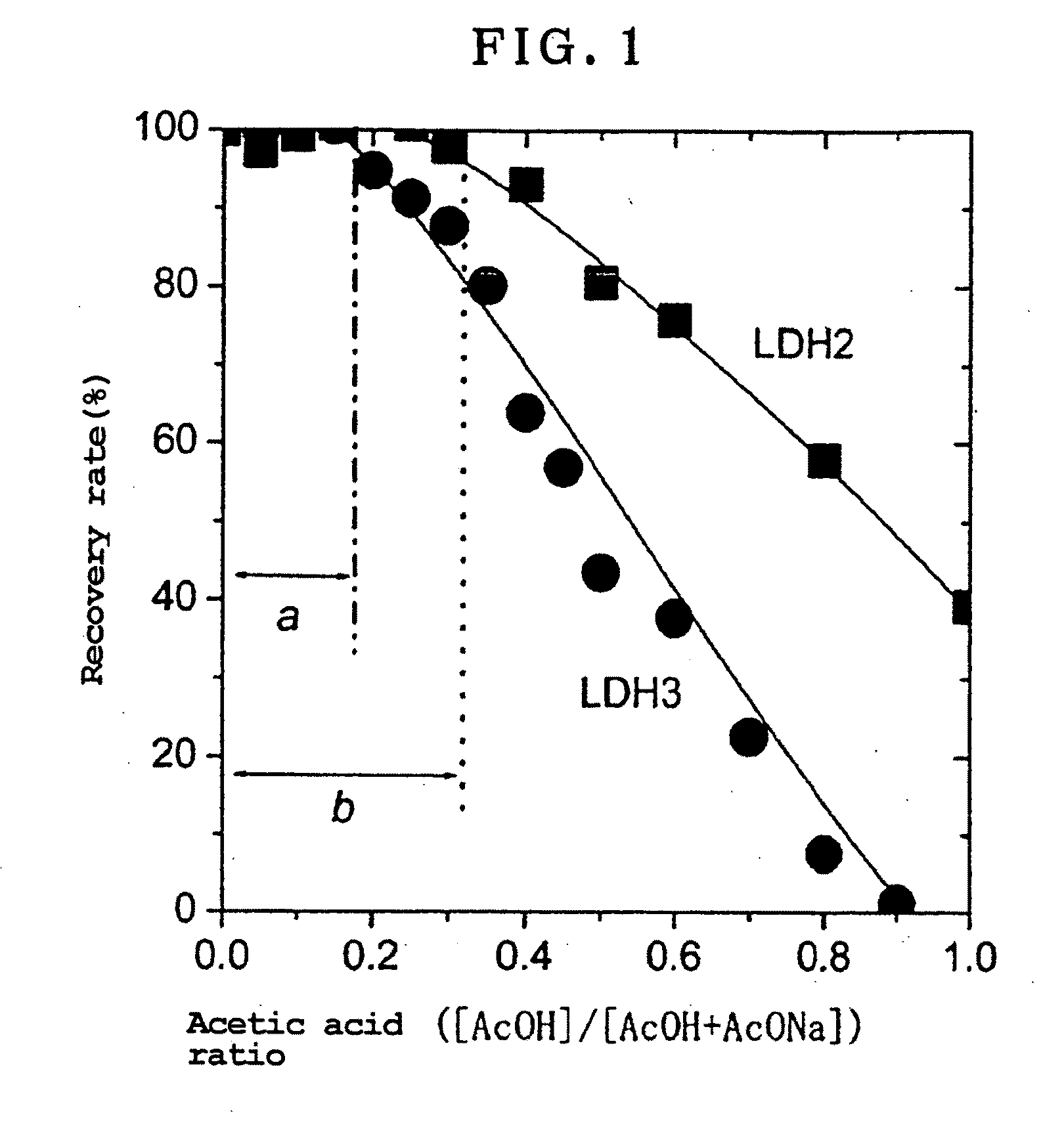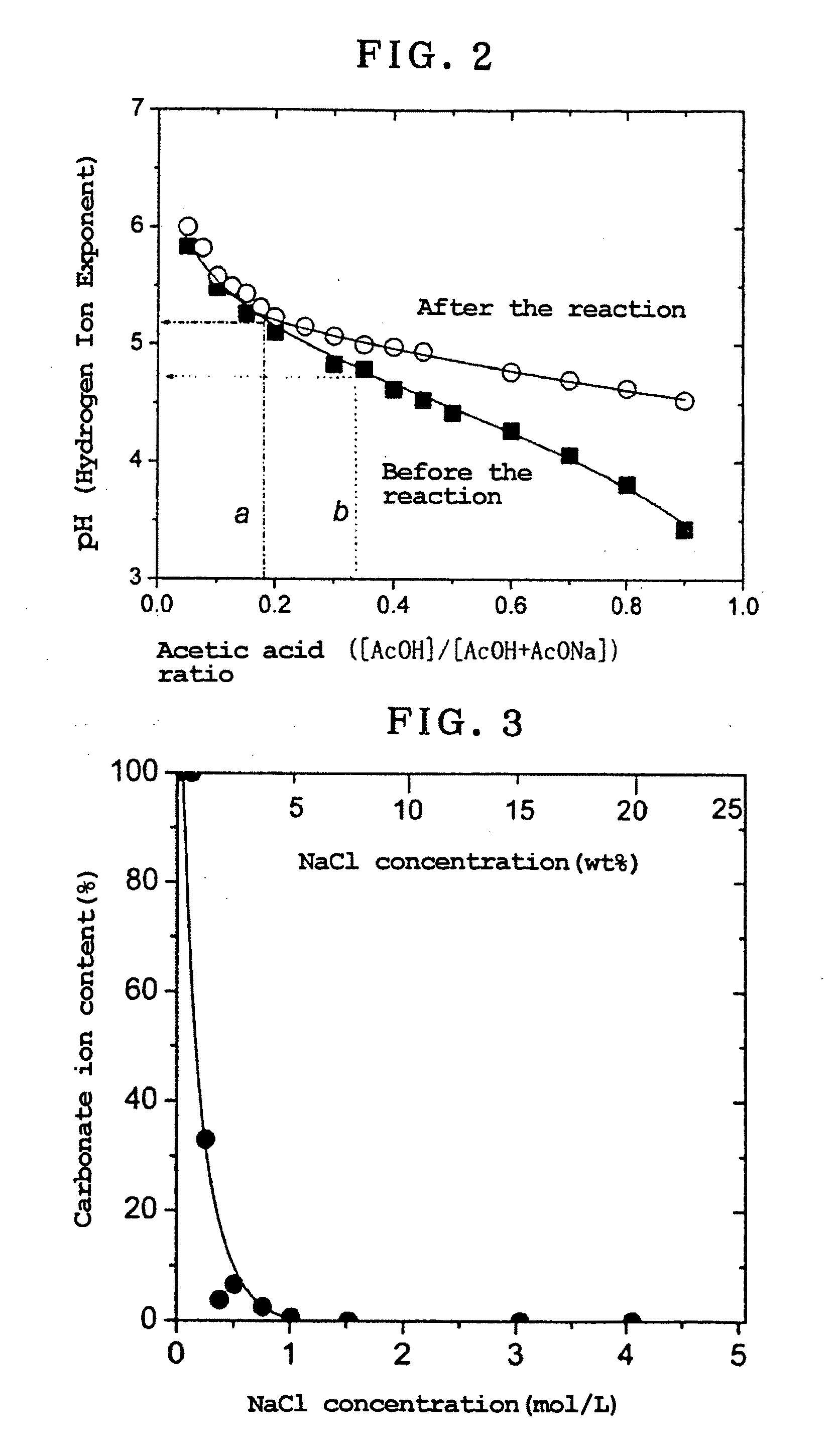Preparation method for anion-exchangeable, layered double hydroxides
a technology of anion exchange and layered double hydroxide, which is applied in the direction of physical/chemical process catalysts, separation processes, nickel compounds, etc., can solve the problems of poor crystallinity of ldhs synthesized of any other type, high difficulty in optimizing synthesis conditions, and low ion exchangeability of ldhs containing carbonate ions, etc., to achieve greater safety and facilitate the effect of handling
- Summary
- Abstract
- Description
- Claims
- Application Information
AI Technical Summary
Benefits of technology
Problems solved by technology
Method used
Image
Examples
example 1
[0072]The following LDHs were used in Examples 1 to 7. LDHs containing Mg ions as the divalent metal ions and Al ions as the trivalent metal ions were used, one having an Mg / Al ratio of about 3 termed as LDH3, and one having an Mg / Al ratio of about 2 as LDH2. LDH3 was a commercial hydrotalcite product represented by formula: Mg3Al(OH)8(CO32−)0.5.2H2O (DHT-6 made by Kyowa Chemical Industry Co., Ltd. with an average grain diameter of about 0.5 to 1 μm and an Mg / Al molar ratio of 2.97 (+0.02). LDH2 was synthesized pursuant to Non-Patent Publication 6, with an average grain diameter of about 1 to 2 μm and an Mg / Al molar ratio of 1.93 (+0.01).
[0073]Experimentation was carried out for the purpose of looking at the effect of the acetic acid buffer alone on the LDH and clarifying the relation between the pH of the solution and LDH's weight reductions.
[0074]LDH3 was used in 20.0 mg and LDH2 in 16.1 mg. This was to make the quantities of anions in both LHDs equal, 0.066 mmol in term of mole. ...
example 2
[0077]This experimentation was carried out while the concentration of NaCl in an acetic acid buffer / NaCl mixed solution was varied to examine changes in the quantity of carbonate ions in the LDH, and weight reductions of the LDH, when NaCl was added to it.
[0078]Sixteen point one (16.1) mg of LDH2, to which 10 ml of an acetic acid buffer / NaCl mixed solution comprising a 0.1 mol / L of an acetic acid buffer having an acetic acid ratio of 0.1 were added to vary the NaCl concentration between 0 and 25% by weight, were subjected to reaction under mild shaking at 25° C. for 1 day. Then, the reaction product was filtered through a 0.2 μm membrane filter in a nitrogen stream, and the precipitate was fully washed with ion exchanged water that had been boiled for removal of carbon dioxide. The filtered-out precipitate was gathered up and recovered, immediately depressurized and dried under a vacuum for 1 hour or longer to obtain white powders. LDH3 was used in 20.0 mg.
[0079]The samples were ana...
example 3
[0081]LDH2 and LDH3 were each analyzed for carbonate ion changes and weight reductions, and determined about the optimum acetic acid ratio in the case where there were varied acetic acid ratios of the acetic acid buffer in the acetic acid buffer / NaCl mixed solution. LDH3 was used in 20.0 mg, and LDH2 in 16.1 mg. Added to each were 10 mL of an acetic acid buffer / NaCl solution in which while the acetic acid buffer concentration was fixed at 0.1 mol / L and the NaCl concentration at 2.53 mol / L, the acetic acid ratio was varied from 0 up to 0.6 for reaction at 25° C. After the elapse of one day, the reaction product was filtered through a 0.2 μm membrane filter in a nitrogen stream, and the precipitate was fully washed with ion exchanged water that had been boiled for removal of carbon dioxide. The filtered-out precipitate was gathered up and collected, and immediately depressurized and dried under a vacuum for 1 hour or longer, thereby obtaining white powders.
[0082]For each of LDH2 and L...
PUM
| Property | Measurement | Unit |
|---|---|---|
| Temperature | aaaaa | aaaaa |
| Crystallinity | aaaaa | aaaaa |
| Shape | aaaaa | aaaaa |
Abstract
Description
Claims
Application Information
 Login to View More
Login to View More - R&D
- Intellectual Property
- Life Sciences
- Materials
- Tech Scout
- Unparalleled Data Quality
- Higher Quality Content
- 60% Fewer Hallucinations
Browse by: Latest US Patents, China's latest patents, Technical Efficacy Thesaurus, Application Domain, Technology Topic, Popular Technical Reports.
© 2025 PatSnap. All rights reserved.Legal|Privacy policy|Modern Slavery Act Transparency Statement|Sitemap|About US| Contact US: help@patsnap.com



